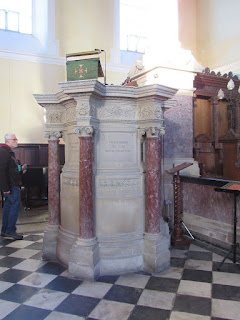Cardiff is the capital of Wales. The city is over 2,000 years old, but it has only been the capital of Wales since 1955. Cardiff is the main commercial centre of Wales as well as the base for the Senedd (the Welsh Parliament), the Wales Millennium Centre Arts Complex, and the Cardiff International Sports Village. Its population in 2021 was 362,400.
Wealthy men made Cardiff what it is today. For example, in 1766, John Stuart, 1st Marquess of Bute married into the Herbert family and was later created Baron Cardiff. In 1778, he began renovating Cardiff Castle. A racecourse, printing press, bank and coffee house opened in the 1790s and Cardiff gained a stagecoach service to London.
in 1793, John Crichton-Stuart, 2nd Marquess of Bute was born. He spent his life building the Cardiff docks and was later hailed as "the creator of modern Cardiff". A twice-weekly boat service between Cardiff and Bristol opened in 1815, and in 1821, the Cardiff Gas Works was established.
Cardiff had been a medieval city and the Bute family sought to make it a new, modern city with wide boulevards, pedestrians areas, and lots of arcades for shopping. In the early 1900s, Cardiff was the home of what would be known as shopping malls. These arcades contained small and independent stores with products made by local craftsmen. A university and the municipal buildings were re-located into one area. As a result, the entire city is well-organized and well-managed.
Rugby is the national sport and people are crazy about it. Games took place in the Cardiff Arms Park was rebuilt and made into Principality Stadium before 2000. The orange plastic seats were sold everywhere to raise money. Matches between England and Wales are magical events with lots of singing and drinking as well as good-natured camaraderie.
Cardiff is a very multi-cultural city. After all, it has been a seaport since the 19th century when coal was exported. Immigrant ships at that time stopped in Cardiff for their coal supplies, and many of the people got off the boats because they thought they had landed in the USA, their destination. They formed a working class that mined coal.
Today, Cardiff is a major center for television and film production (such as Doctor Who, Torchwood and Sherlock), and it is the Welsh base for the main national broadcasters.
Cardiff University contributes to the diversity of the student-friendly capital.
The Welsh language is unique and still being spoken. According to Historic UK,
Welsh is a Brythonic language, meaning British Celtic in origin and was spoken in Britain even before the Roman occupation. Thought to have arrived in Britain around 600 BC, the Celtic language evolved in the British Isles into a Brythonic tongue which provided the basis not only for Welsh, but also Breton and Cornish. At this time in Europe, Celtic languages were spoken across the continent even as far as Turkey.
Welsh spoken in the Middle Ages period, between 1000 and 1536, became known as Middle Welsh. From the twelfth century onwards, Middle Welsh formed the basis for one of the most famous manuscripts of this time in Britain, the Mabinogion. This famous literary collection of prose stories is one of the earliest examples of its kind, thought to date from either the twelfth or thirteenth centuries and inspired by earlier story-telling.
In the twentieth century, there was a growing recognition that the Welsh language and Welsh speakers were being discriminated against, for example, in 1942 the Welsh Courts Act formally addressed the issue of defendants and plaintiffs being forced to speak in English and ushered in a new law allowing Welsh to be used in the courts.
By 1967, a very important and crucial piece of legislation was introduced thanks to the campaigning of many individuals including Plaid Cymru and the Welsh Language Society.
This marked a pivotal moment when the prejudices ushered in during the Tudor period began to be reversed. Today the Welsh language is embraced and spoken at home, in the workplace, in the community and in government. In the 2011 census, over 562,000 people named Welsh as their main language.
Signs in Wales are typically in both Welsh and English. Here are some examples:





Resources
Andrew Speed, guide of Costsaver Tour Company
Cardiff -- https://en.wikipedia.org/wiki/Cardiff
Historic UK -- https://www.historic-uk.com/HistoryUK/HistoryofWales/Welsh-Language/




















































